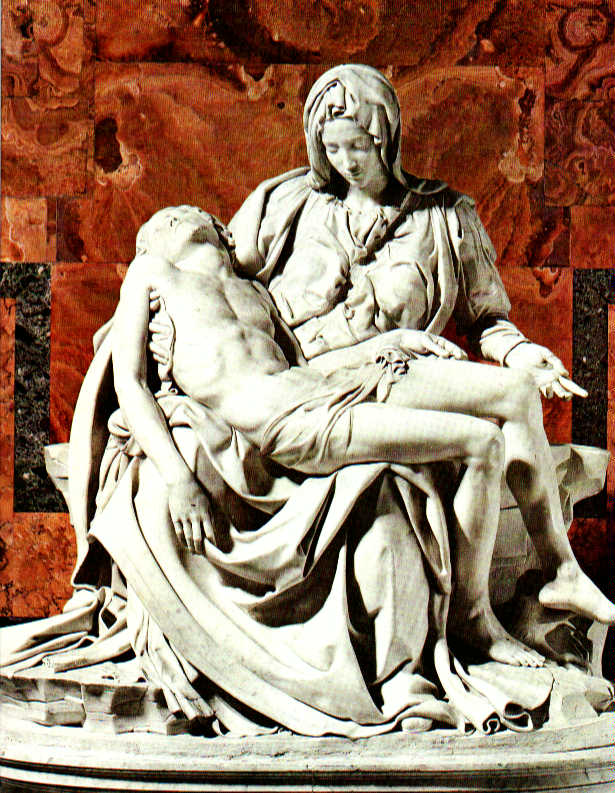MICHELANGELO di Lodovico Buonarroti Simoni
Biography
Pieta

1499
Marble, height 174 cm, width at the base 195 cm
S. Pietro, Vatican
In the Pieta, Michelangelo approached a subject
which until then had been given form mostly north of the Alps, where the
portrayal of pain had always been connected with the idea of redemption:
it was called the "Vesperbild" and represented the seated Madonna
holding Christ's body in her arms. But now the twenty-three year-old artist
presents us with an image of the Madonna with Christ's body never attempted
before. Her face is youthful, yet beyond time; her head leans only slightly
over the lifeless body of her son lying in her lap. "The body of the
dead Christ exhibits the very perfection of research in every muscle, vein,
and nerve. No corpse could more completely resemble the dead than does
this. There is a most exquisite expression in the countenance. The veins
and pulses, moreover, are indicated with so much exactitude, that one cannot
but marvel how the hand of the artist should in a short time have produced
such a divine work."
One must take these words of Vasari about the "divine beauty"
of the work in the most literal sense, in order to understand the meaning
of this composition. Michelangelo convinces both himself and us of the
divine quality and the significance of these figures by means of earthly
beauty, perfect by human standards and therefore divine. We are here face
to face not only with pain as a condition of redemption, but rather with
absolute beauty as one of its consequences.
[Back] [Search]
[Alphabetical Index] [Artist
Index] [Welcome Page]
Mail your comments by clicking
here

